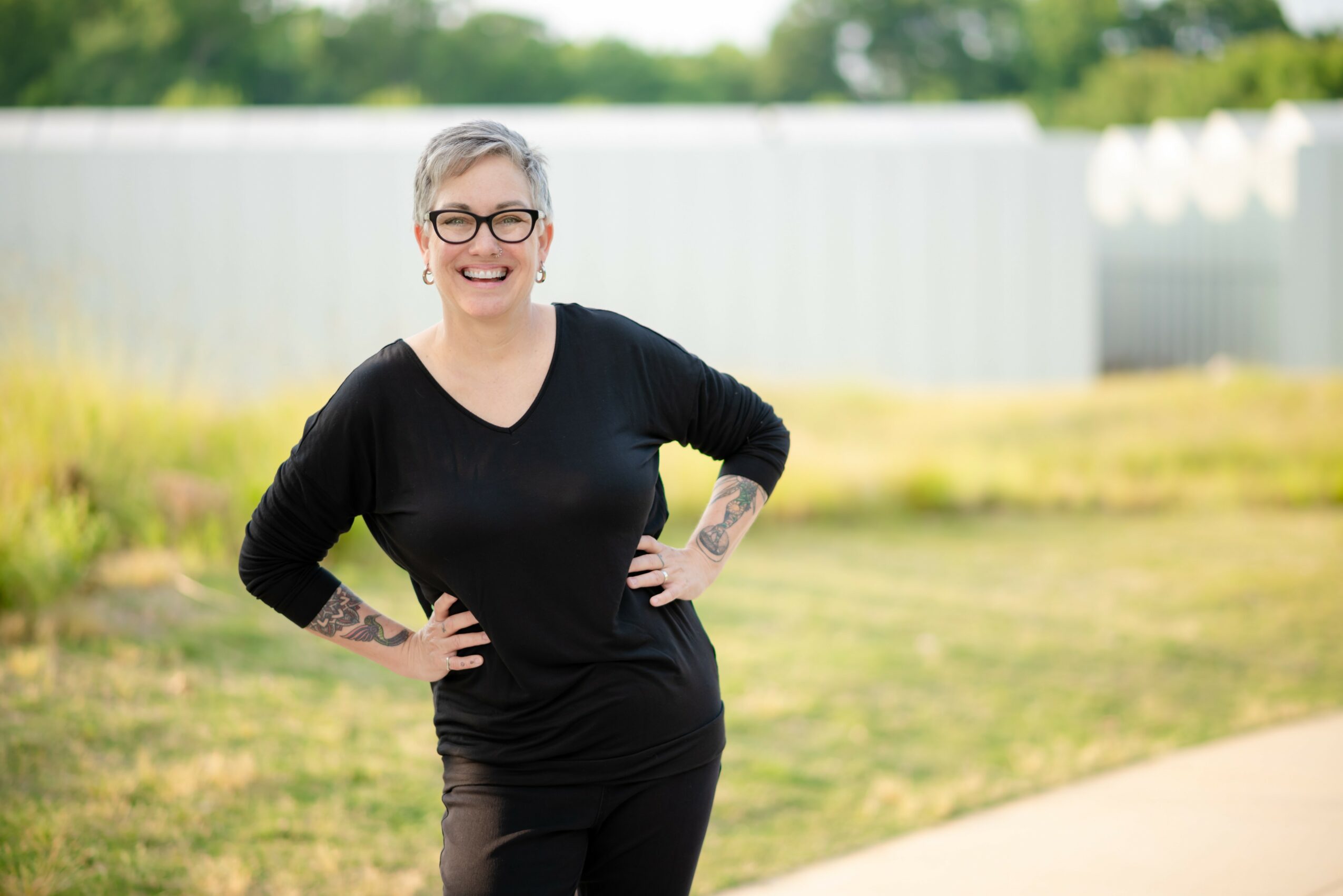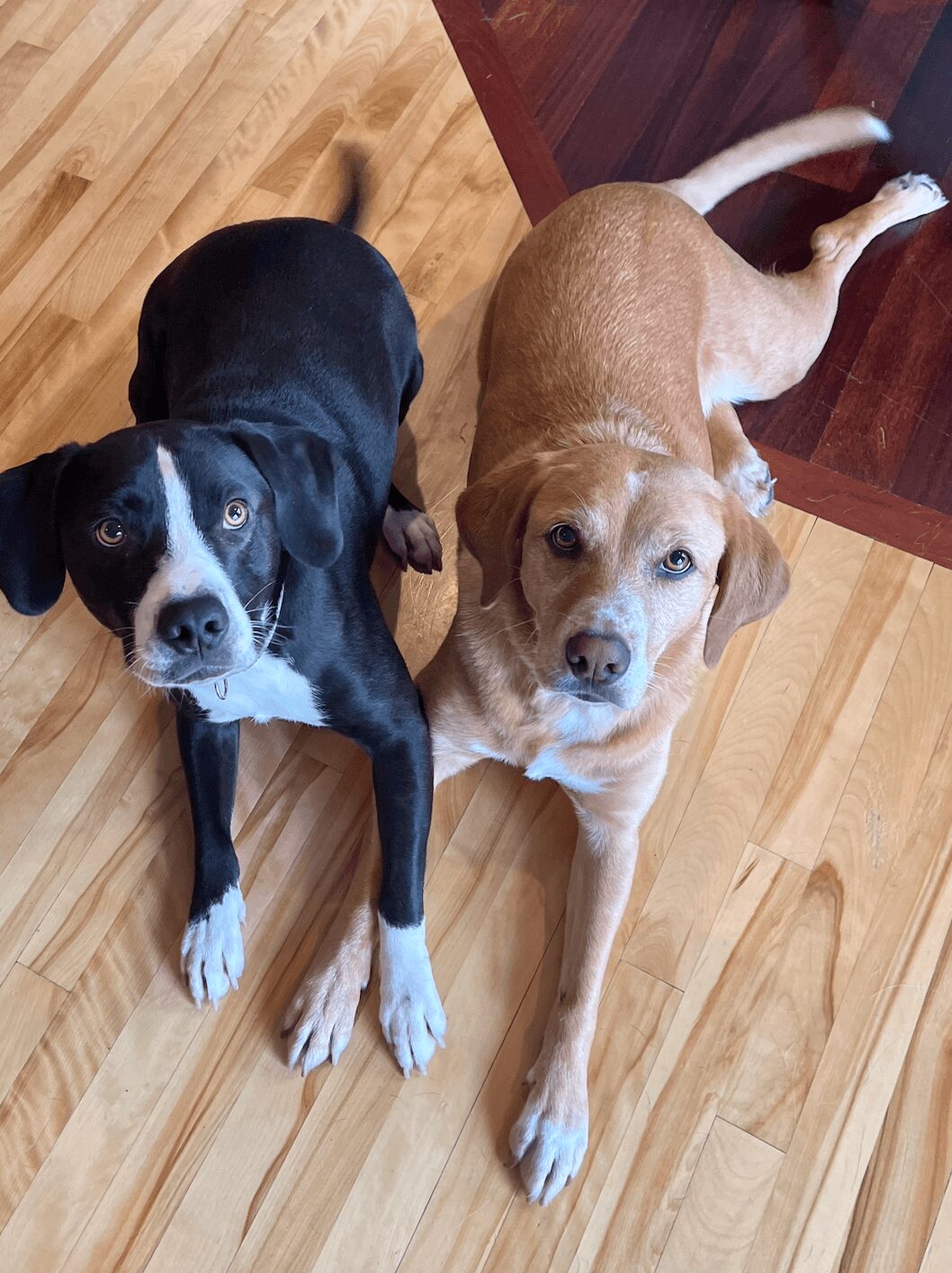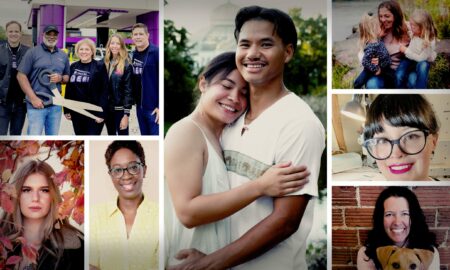

Terri Allred shared their story and experiences with us recently and you can find our conversation below.
Hi Terri, thank you for taking the time to reflect back on your journey with us. I think our readers are in for a real treat. There is so much we can all learn from each other and so thank you again for opening up with us. Let’s get into it: What is something outside of work that is bringing you joy lately?
Pottery has been bringing me so much joy lately. There’s something incredibly grounding about getting my hands in the clay, slowing down, and creating with no agenda other than to explore. It activates a different part of my imagination, one that doesn’t care about outcomes or productivity, just presence and play. In a world where so much of my work lives in ideas, supporting others, and holding space, pottery gives me a place to simply be, experiment, and delight in the creative process. It’s become a quiet refuge and a reminder that joy often lives in the most tactile, human moments.
Can you briefly introduce yourself and share what makes you or your brand unique?
I’m Terri Allred, and I help mission-driven leaders and organizations create workplaces where people feel safe, supported, and able to do their best work without burning out. I’m a trauma-informed coach and trainer with a long background in trauma work, nonprofit leadership, and coaching.
My approach combines nervous-system awareness, compassionate communication, and practical leadership tools. I don’t believe we have to choose between caring for people and driving results; healthy, grounded leaders create stronger teams and better outcomes.
Right now, I’m focused on expanding my trauma-informed leadership programs and helping leaders build cultures rooted in trust, wellbeing, and real human connection. At the end of the day, I help people lead in a way that feels good for them and for the people they serve.
Appreciate your sharing that. Let’s talk about your life, growing up and some of topics and learnings around that. What part of you has served its purpose and must now be released?
As I move into this next chapter, I’m releasing the part of me that believed I had to strive, prove, and hustle in order to matter. For a long time, that drive served me by helping me build a meaningful career, navigate trauma work, and create spaces for others to grow and heal. But now, approaching 60, I can feel that season shifting.
The part of me that pushed and performed has done its job. I’m ready to thank it and then gently set it down.
What I’m leaning into instead is presence, ease, and authentic connection. Not earning my place, but being in it. Not running toward the next accomplishment, but savoring the relationships, creativity, and joy that are already here. This next chapter is less about proving myself and more about living fully, generously, and with deep alignment to who I am.
What have been the defining wounds of your life—and how have you healed them?
I’ve walked through a lot in my life; trauma, chronic anxiety, multiple episodes of clinical depression, a traumatic brain injury, and now fibromyalgia. It’s been a long journey of learning that our bodies hold on to what we try to power through with our minds. I used to think strength meant pushing past it all. Now I know healing looks more like listening, honoring my limits, and treating myself with the same compassion I offer others.
For a long time, I believed resilience meant pushing harder, outperforming the pain, and never letting anyone see the cracks. But trauma has a way of whispering and then insisting that we slow down, listen, and meet ourselves with compassion.
My greatest healing has come through the body. Not in forcing it to “get over it,” but in learning to befriend it. Nervous-system work, somatic practices, and reclaiming safety in my own skin have been essential. So has releasing the belief that strength means doing everything alone.
These experiences have taught me to be gentle with myself and with others. To remember that most people are doing the best they can with the nervous system, history, and resources they have in the moment. And to understand that unhealed adversity doesn’t just live in our private lives. It shows up at work, in teams, in leadership styles, and in the way we relate to one another when stress rises.
I don’t believe healing is about erasing what happened. For me, it’s been about integrating it — letting it soften me, deepen my empathy, expand my capacity for connection, and guide me toward work that centers humanity, dignity, and nervous-system-supported leadership.
Next, maybe we can discuss some of your foundational philosophies and views? What truths are so foundational in your life that you rarely articulate them?
There are a few beliefs so woven into who I am that I rarely say them out loud; they simply live in me.
I know we are deeply interconnected. Our lives are not separate threads but part of one fabric. How we show up, how we treat ourselves and others, the care we give and receive, it all ripples.
I also believe the divine is made visible through love. Not just grand gestures, but presence, kindness, and the way we choose to see and honor each other.
And I trust that our energy matters. The nervous system we bring into a room, the steadiness or tension we carry, the openness or defensiveness we hold, all shape the space and people around us. Leadership begins in that awareness.
These truths guide how I live, lead, and support others. They are not statements I recite; they are the ground I stand on.
Thank you so much for all of your openness so far. Maybe we can close with a future oriented question. Are you doing what you were born to do—or what you were told to do?
I feel really fortunate because I’ve had a clear sense of purpose for as long as I can remember. I’ve always known I was here to ease suffering, especially for people who have been marginalized or pushed to the edges. Every chapter of my professional life has been grounded in that mission.
What has shifted over time is how I live that purpose. Early on, it meant direct trauma work and advocacy. Now, after 40 years in this field, I get to weave that experience into leadership and organizational development. Through trauma-informed leadership coaching and teaching, I help leaders create workplaces where people feel safe, valued, and supported so healing and wellbeing aren’t just possible for individuals, but for entire teams and communities.
For me, that feels like doing exactly what I was born to do.
Contact Info:
- Website: https://www.allredconsulting.com/
- Instagram: https://www.instagram.com/terriallredcoach/
- Linkedin: https://www.linkedin.com/in/terriallred/
- Other: Substack
https://traumacoach.substack.com/





Image Credits
Alan Trammel, photographer











